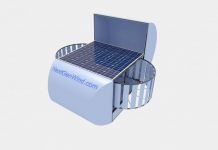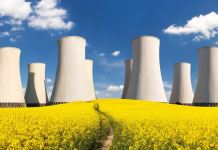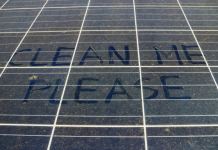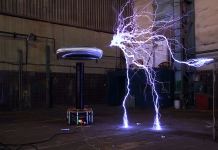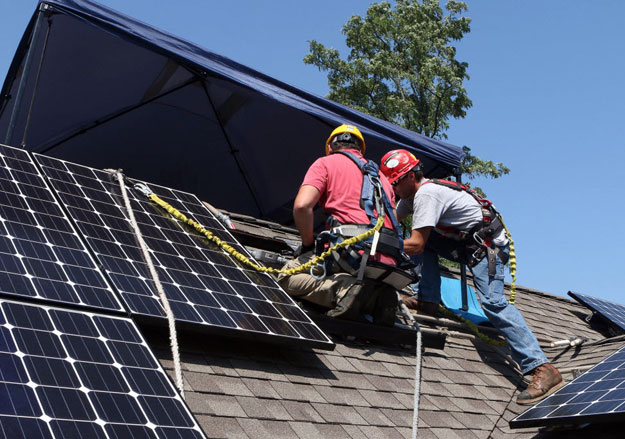Monocrystal solar panels are a kind of the national team of the silicon panel which absorbs solar energy for the subsequent its processing on thermal or electric. All design consists of silicone links which are connected among themselves by clear silicon (clarification by Chokhralsky’s technique). This type of panels is produced from silicon monocrystals which in the device have full blue or turbid black shade, and also take the form of the rounded squares.
Production
Production of this type of panels begins with preparation of silicon which needs to be purified of impurity as much as possible. The mass fraction of this component makes 99.99%. The following stage – melting of silicon at a temperature of 1400 °C. The melted silicon mix is synthesized with padding components to increase productive and service performance of future photos of links. For formation of the necessary crystalline structure, monocrystals produce in express crucibles which during production constantly rotate. As a result receive ingots of a rounded cylindrical shape which process further and give them a type of spherical squares, cut diamond files on thin plates 250-300 microns thick, clearing them of suspension oddments. Thus also create monocrystal solar panels which production is much more difficult and more long, in comparison with other types.
Advantages and shortcomings
As well as any other energy source, monocrystal solar panels have advantages and shortcomings which distinguish this look from others.
It is possible to refer the following criteria to advantages of monocrystal solar panels:
• High performance of work at low air temperatures. Thanks to the specific structure mono links are capable to work productively during the winter period, and also at low temperatures. On a counterbalance to this type of panels, weed links, work several times worse.
• Installation on pulled curved surfaces. Thanks to flexible structure monocrystal solar batteries are capable to function normally on curved surfaces, without reducing quality of work of photo cells.
• High level of efficiency. Panels which consist of a mono link have a high efficiency, in comparison with other types of solar panels, reaching an indicator of 17%-22%. Such overall performance is possible thanks to the homogeneous structure of the panel which allows to absorb light, without disseminating it on a surface. The high level of efficiency is one of the popularity reasons among buyers of this type of panels.
• Ecological factor, upkeep. Solar panels do not produce from harmful or toxic substances, the product of their activity is not dangerous therefore they do not damage a surrounding medium or health of the person at all. An upkeep of panels obliges only to a periodic external design of dusting that does use of the device prime.
• High and long efficiency. Thanks to the homogeneous structure and use of silicon of the highest quality, mono links do not lose the properties over time and do not worsen serviceability. In comparison with polycrystalline panels, monocrystal work for about 10% better. Researchers claim that in 25 years of continuous operation of panels with weed links they will lose 30% of effectiveness while mono links only 20%.
It is possible to refer the following criteria to shortcomings of monocrystal solar panels:
• Nonuniform density of filling of links. Because of specific structure monocrystal elements do not fill all effective area of the panel therefore between them there are uninvolved emptiness. Therefore, despite a high level of efficiency of mono links, weed elements, thanks to the high and uniform density, can sometimes show result better.
• High cost of production and installation of elements. Monocrystal solar panels by production and installation manage in the considerable sum, than, for example, polycrystalline. It is bound to need to use clear silicon, and also with the composite technological process of manufacture. On average with weed the cost of panels links 10% lower, than with mono links.
• Low serviceability at the poor level of irradiating. Through the homogeneous structure of a surface these panels worse than other types absorb scattered light. Such characteristic does not allow the device to work smoothly during the interseasonal period, and also at a high cloudiness. However, the modern technologies allow to fix this problem and shortly it will disappear completely.
Application
Monocrystal solar panels are actively used at the various enterprises, productions and branches. Thanks to them it is possible to provide with the electric power and thermal resources of the place where traditional delivery is impossible or complicated. Modified and advanced monopanels apply in space technologies and expeditions. Most often solar panels with mono links are used:
• For power supply of the industrial and hotel and tourist facilities;
• For power supply of the remote objects of the oil and gas industry;
• For heat and power supply in agricultural objects;
• For power supply of complexes of a mobile and radio communication;
• For power supply of the equipment on a desalting and clarification of water;
• For lighting of streets, public places and objects of the recreational direction;
• Electro-and warm providing quotients and houses.
Considering a world energy crisis, use of solar power stations can significantly improve a situation and give to mankind desired non-volatility, at the same time without doing harm to a surrounding medium and the person.











